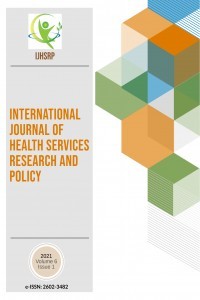DOES THE FREQUENCY OF ACUTE CHOLECYSTITIS DECREASE DURING THE RAMADAN MONTH?
DOES THE FREQUENCY OF ACUTE CHOLECYSTITIS DECREASE DURING THE RAMADAN MONTH?
acute cholecystitis, general surgery, abdominal pain,
___
- [1] Yokoe, M., et al. “Tokyo Guidelines 2018: diagnostic criteria and severity grading of acute cholecystitis (with videos)”, J Hepatobiliary Pancreat Sci, 25(1), 41‐54, 2018.
- [2] Abbas, SM., Basalamah, AH. “Effects of Ramadhan fast on male fertility”, Arch Androl, 16(2), 161-166, 1986.
- [3] Hosseini, SV. et al. “The effect of season and Ramadan fasting on the onset of acute cholecystitis”, Saudi Med J, 27(4), 503‐506, 2006.
- [4] Halpin, V. “Acute cholecystitis”, BMJ Clin Evid, 08, 411, 2014.
- [5] Kuroi, Y., et al. “Acute cholecystitis in patients with stroke”, Neurol India, 67(2), 439‐441, 2019.
- [6] Indar, AA., Beckingham, IJ. “Acute cholecystitis”, BMJ, 325(7365), 639‐643, 2002.
- [7] Yu, H., Uyeda, JW. “Imaging of Acute Hepatobiliary Dysfunction”, Radiol Clin North Am, 58(1), 45‐58, 2020.
- [8] Abboud, PA., et al. “Predictors of common bile duct stones prior to cholecystectomy: a meta-analysis”, Gastrointest Endosc, 44(4), 450‐455, 1996.
- [9] Wertz, JR., et al. “Comparing the Diagnostic Accuracy of Ultrasound and CT in Evaluating Acute Cholecystitis”, AJR Am J Roentgenol, 211(2), 92‐97, 2018.
- [10] Cao, Z., et al. “Risk factors of systematic biliary complications in patients with gallbladder stones”, Ir J Med Sci, 189(3), 943-947, 2020.
- [11] Goh, SNS., et al. “Improved outcomes for index cholecystectomy for acute cholecystitis following a dedicated emergency surgery and trauma service (ESAT)”, Eur J Trauma Emerg Surg, 2020. published online ahead of print, doi:10.1007/s00068-020-01308-1
- Yayın Aralığı: Yılda 3 Sayı
- Başlangıç: 2016
- Yayıncı: Rojan GÜMÜŞ
THE RELATIONSHIP BETWEEN HUMOR STYLE AND DEATH ANXIETY OF PALLIATIVE CARE PATIENTS
Mustafa DURMUŞ, Halil ALKAN, Necmettin ÇİFTCİ
DOES THE FREQUENCY OF ACUTE CHOLECYSTITIS DECREASE DURING THE RAMADAN MONTH?
Murat SEYİT, Atakan YILMAZ, Sevda YILMAZ, Mert ÖZEN
Melda SOYSAL TOMRUK, Alp Tunca YAPICI, Nihal GELECEK, Orhan KALEMCİ
ATTITUDES OF PEDIATRIC NURSES AND TEACHERS TOWARDS CHILDREN’S RIGHTS AND THEIR PARENTAL ATTITUDES
Esra TURAL BÜYÜK, Emel ODABAŞOĞLU, Hatice UZŞEN, Merve KOYUN
SEXUAL ORIENTATION MYTHS: DOES THEOLOGICAL EDUCATION AFFECT SEXUAL ORIENTATION MYTHS?
EXAMINATION OF COVID-19 FEAR IN TERMS OF ITS DEFINING CHARACTERISTICS
Sevim ÇİMKE, Dilek YILDIRIM GÜRKAN, Derya ESENKAYA
Heather LEGGETT, Frank FOX, Karen VİNALL COLLİER, Julia CİSKAR, Evangelos ZORMPAS, Helen WHELTON, Gail DOUGLAS
